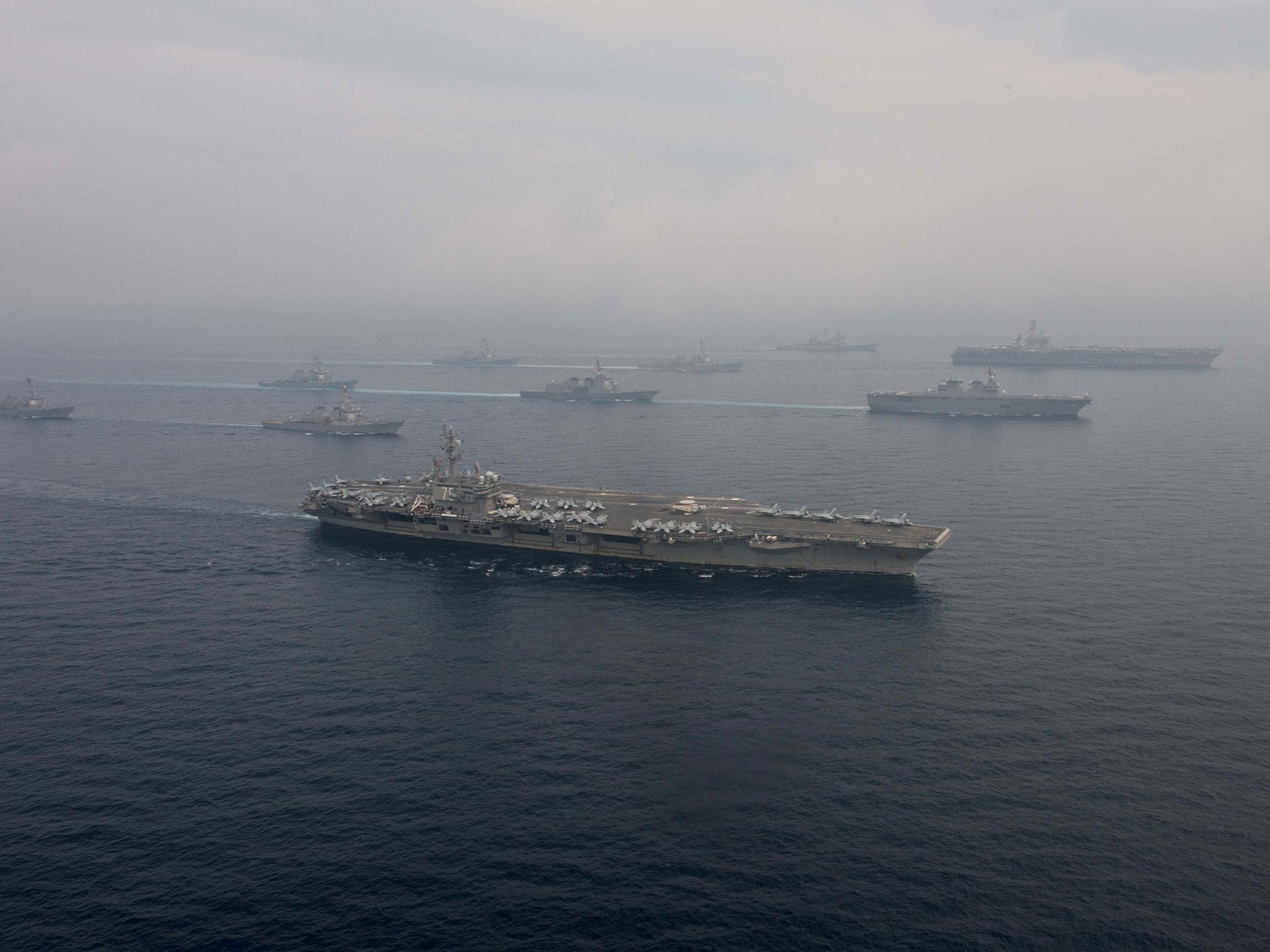Your support helps us to tell the story
From reproductive rights to climate change to Big Tech, The Independent is on the ground when the story is developing. Whether it's investigating the financials of Elon Musk's pro-Trump PAC or producing our latest documentary, 'The A Word', which shines a light on the American women fighting for reproductive rights, we know how important it is to parse out the facts from the messaging.
At such a critical moment in US history, we need reporters on the ground. Your donation allows us to keep sending journalists to speak to both sides of the story.
The Independent is trusted by Americans across the entire political spectrum. And unlike many other quality news outlets, we choose not to lock Americans out of our reporting and analysis with paywalls. We believe quality journalism should be available to everyone, paid for by those who can afford it.
Your support makes all the difference.Japan and the US have begun a three-day military exercise in the Sea of Japan adding pressure on North Korea to halt its accelerating ballistic missile programme.
Japan’s navy sent two ships, including one of its four helicopter carriers, the Hyuga, to join the USS Ronald Reagan and USS Carl Vinson, and their eight escort ships yesterday. Japanese F-15s are also taking part in simulated combat with US F-18s.
“It’s the first time we have exercised with two carriers. It’s a major exercise for us,” a Japanese military spokesman said.
The Sea of Japan separates Japan from the Korean Peninsula.
The United States sent the warships to the region after a surge of tension on the Korean Peninsula over fears the North was about to conduct another nuclear test in its bid to develop an intercontinental ballistic missile capable of hitting mainland United States.
Shinzo Abe, the Japanese Prime Minister, has vowed to work with other countries to deter North Korea, which on Monday conducted a short-range ballistic missile test.
The missile reached an altitude of 120km before falling into the Sea of Japan in international waters, but inside Japan’s exclusive economic zone where it has jurisdiction over the exploration and exploitation of maritime resources.
The launch followed two successful tests of medium-to-long-range missiles in as many weeks.
North Korea can already strike anywhere in Japan with missiles, raising concern in Tokyo that it could eventually be threatened by a nuclear strike.
South Korea’s new liberal President, Moon Jae-in, who took office on 10 May, has taken a more conciliatory line than Mr Abe, pledging to engage with his reclusive neighbour.
Reuters

Join our commenting forum
Join thought-provoking conversations, follow other Independent readers and see their replies
Comments